Discussion
A reply to another thread has prompted me to ask this question:-
Why do so many of you tackle your own electrics when you clearly have not got a jar of glue?
Its getting that bad that I have to add at least half a day onto every quote just to put the original stuff right before I do any of my own work. Its every single job I come across just lately, Today I had to spend 2 hours in a red hot loft up to my neck in dirty insulation trying to put right the wiring because someone fancied a couple of wall lights over the bed Badly made of exposed connectors and snipped out earth's seem to be the norm.
A heads up for the DIYers, the un-sleeved centre wire in a cable actually does something and its not just a means of stripping the cable back.
Why do so many of you tackle your own electrics when you clearly have not got a jar of glue?
Its getting that bad that I have to add at least half a day onto every quote just to put the original stuff right before I do any of my own work. Its every single job I come across just lately, Today I had to spend 2 hours in a red hot loft up to my neck in dirty insulation trying to put right the wiring because someone fancied a couple of wall lights over the bed Badly made of exposed connectors and snipped out earth's seem to be the norm.
A heads up for the DIYers, the un-sleeved centre wire in a cable actually does something and its not just a means of stripping the cable back.
Simpo Two said:
If I think I can do something myself, I usually do it myself. If I don't think I can do something myself, I get a man in.
I do things myself not necessarily to save money, but to do it in my time, my way, to my standards - and I enjoy doing it.
I'm sure you do but the stuff I see the people think they can do it themselves as well and probably give themselves a pat on the back after doing it.I do things myself not necessarily to save money, but to do it in my time, my way, to my standards - and I enjoy doing it.
C0ffin D0dger said:
Interesting you should mention plugging ovens into 13A sockets. All the wiring for our extension / kitchen was done by "professionals" and the two Siemens ovens we have clearly state on the instructions that they are not to be wired up to 13A plugs/sockets and yet what do I find, yep you've guessed it pair of sockets in the cupboard with the ovens plugged into them. Now I have a degree in Electrical and Electronic Engineering so I sort of know what I'm doing  The ovens are rated at (IIRC) 13.5A and 14A, given that the good old British 13A plug is over engineered and can cope with a bit more current than that and that the sockets are being supplied of a 45A spur direct from the consumer unit I'll let it go. I don't have any concerns about my house burning down. That said when a Siemens technician was out to fix one of the ovens he did insist on sticking a sticker to the sockets to say it wasn't a compliant installation.
The ovens are rated at (IIRC) 13.5A and 14A, given that the good old British 13A plug is over engineered and can cope with a bit more current than that and that the sockets are being supplied of a 45A spur direct from the consumer unit I'll let it go. I don't have any concerns about my house burning down. That said when a Siemens technician was out to fix one of the ovens he did insist on sticking a sticker to the sockets to say it wasn't a compliant installation.
I'll happily tackle easy electrical jobs around the house but if it looks complicated or there are safety implications then I'll pay someone to do it.
Doesn't sound right at all. Has each oven got its own 45? amp supply? or is it one supply that feeds 2 single sockets. If its a 45A breaker then the cable should be 10mm however I cant see them looping 10mm (or even 6mm) in and out of 2 single sockets. The ovens are rated at (IIRC) 13.5A and 14A, given that the good old British 13A plug is over engineered and can cope with a bit more current than that and that the sockets are being supplied of a 45A spur direct from the consumer unit I'll let it go. I don't have any concerns about my house burning down. That said when a Siemens technician was out to fix one of the ovens he did insist on sticking a sticker to the sockets to say it wasn't a compliant installation.
The ovens are rated at (IIRC) 13.5A and 14A, given that the good old British 13A plug is over engineered and can cope with a bit more current than that and that the sockets are being supplied of a 45A spur direct from the consumer unit I'll let it go. I don't have any concerns about my house burning down. That said when a Siemens technician was out to fix one of the ovens he did insist on sticking a sticker to the sockets to say it wasn't a compliant installation.I'll happily tackle easy electrical jobs around the house but if it looks complicated or there are safety implications then I'll pay someone to do it.
If it was me doing it I would have run 2 x 2.5 supplies on 16A breakers and used a 20A DP switch for each oven.
Stuff has a maximum rating as well as a minimum one. If you were to do as you say then the supply flex to each oven, that may well be a piece of 1.5mm (and the ovens themselves) would only have protection via a 45A fuse. Dito for the 2.5 to the socket/switch.
in all probability nothing will ever go wrong but you never know.
If it was me and there was room I would put a little 2 way unit in with 2x16A mcbs going to 2 DP switches.
in all probability nothing will ever go wrong but you never know.
If it was me and there was room I would put a little 2 way unit in with 2x16A mcbs going to 2 DP switches.
Ok I'm the first to admit a lot of bad electrical work is done by so called professional electricians, most of them I would imagine are the new breed type. You know the ones, spunk a couple of grand on a course and get registered somehow, they are then free to make your house a death trap.
Just last month we took a flat roof off a 2 year old extension to make it a pitched one, you should have seen the electrics (and everything else) done by the poles, I'm gutted I didn't take any pictures but it was as bad as I have ever seen, loads of junction boxes that looked like this

No certs, how did it ever get passed by building control.
However its definitely the DIYers that cock things up royally. Yesterdays was a cracker, the previous owner of the house had installed a couple of wall lights that the new owners wanted rid of. The bloke had taken a twin and earth between the light switch and the wall lights, when it dawned on him they wouldn't work because there was no neutral at the switch he just hacked into the ring main cable next to the nearest socket, butchered that cable and picked up his neutral from there. No RCD and just rewireable fuses Everything worked though so it must be OK.
Just last month we took a flat roof off a 2 year old extension to make it a pitched one, you should have seen the electrics (and everything else) done by the poles, I'm gutted I didn't take any pictures but it was as bad as I have ever seen, loads of junction boxes that looked like this

No certs, how did it ever get passed by building control.
However its definitely the DIYers that cock things up royally. Yesterdays was a cracker, the previous owner of the house had installed a couple of wall lights that the new owners wanted rid of. The bloke had taken a twin and earth between the light switch and the wall lights, when it dawned on him they wouldn't work because there was no neutral at the switch he just hacked into the ring main cable next to the nearest socket, butchered that cable and picked up his neutral from there. No RCD and just rewireable fuses Everything worked though so it must be OK.
Alucidnation said:
hairyben said:
Alucidnation said:
However, most ovens loading can be calculated using diversity and with that, most will end up rated a lot less than the label states and probaby could run forever on a 13A plug.
Utter codswallop.Diversity can be applied when multiple items are in use and not all likey to be used at once, for example a socket circuit with 10 13amp outlets doesn't need to be rated to 130 amps.
A cooker circuit loading may be calculated using a diversity formula; this is because a cooker circuit may supply a number of load-consuming items on it, for example an oven and 4 rings, not all of which are likely to be used at their highest load at the same time. You cannot apply diversity to a fixed load item, or for that matter it's "method of connection"- diversity applies only to circuit design load, and everything attached must meet that rating, although final connection flexes of smaller size are permitted when they meet the appliances max loading.
You disagree but repeat (albeit with more detail than required in this instance) what i basically said.
TBH, I really can't even be bothered to argue with you.
Crack on with whatever works for you.
Edited by Alucidnation on Friday 15th May 17:42
jason61c said:
stuart313 said:
Ok I'm the first to admit a lot of bad electrical work is done by so called professional electricians, most of them I would imagine are the new breed type. You know the ones, spunk a couple of grand on a course and get registered somehow, they are then free to make your house a death trap.
Just last month we took a flat roof off a 2 year old extension to make it a pitched one, you should have seen the electrics (and everything else) done by the poles, I'm gutted I didn't take any pictures but it was as bad as I have ever seen, loads of junction boxes that looked like this
.
So AJH Electricians, how do you know it was "done by the poles"? Or was it a copy of the daily mail on your dashboard?Just last month we took a flat roof off a 2 year old extension to make it a pitched one, you should have seen the electrics (and everything else) done by the poles, I'm gutted I didn't take any pictures but it was as bad as I have ever seen, loads of junction boxes that looked like this
.
Secondly not only did it look like it was done by poles, the woman said she had Polish builders in to do the job in the first place so its a pretty safe bet they were poles. The brickwork was that wonky it had to be rendered.
jason61c said:
stuart313 said:
jason61c said:
stuart313 said:
Ok I'm the first to admit a lot of bad electrical work is done by so called professional electricians, most of them I would imagine are the new breed type. You know the ones, spunk a couple of grand on a course and get registered somehow, they are then free to make your house a death trap.
Just last month we took a flat roof off a 2 year old extension to make it a pitched one, you should have seen the electrics (and everything else) done by the poles, I'm gutted I didn't take any pictures but it was as bad as I have ever seen, loads of junction boxes that looked like this
.
So AJH Electricians, how do you know it was "done by the poles"? Or was it a copy of the daily mail on your dashboard?Just last month we took a flat roof off a 2 year old extension to make it a pitched one, you should have seen the electrics (and everything else) done by the poles, I'm gutted I didn't take any pictures but it was as bad as I have ever seen, loads of junction boxes that looked like this
.
Secondly not only did it look like it was done by poles, the woman said she had Polish builders in to do the job in the first place so its a pretty safe bet they were poles. The brickwork was that wonky it had to be rendered.
 k are you going on about, look, I went to a job where the owner had previously had poles in to build her an extension. The builder took the flat roof off and put a pitched one on, when the ceiling was pulled down it exposed the horrendous wiring that the poles had done. I didn't take any pictures of it so I pulled a random picture off the internet to compare what the wiring was like. HTH.
k are you going on about, look, I went to a job where the owner had previously had poles in to build her an extension. The builder took the flat roof off and put a pitched one on, when the ceiling was pulled down it exposed the horrendous wiring that the poles had done. I didn't take any pictures of it so I pulled a random picture off the internet to compare what the wiring was like. HTH.Having said that, the picture I posted looks like it was done by the polaks.
Edited by stuart313 on Saturday 16th May 17:53
Zulu 10 said:
When designing your installations, do you have to consider such things as interoperability, matching, EMC, SWAP and Red/Black separation? (and here's a clue: red/black separation doesn't mean not letting live and neutral touch)
When you do, then you can start lecturing some of the rest of us on how complicated your job is, and the dozens of things which you take into account, and how we shouldn't presume to be able to undertake such tasks ourselves.
Do DIYers (and the cowboys) have a loop tester and the regs book, do they bother themselves with Zs readings and if the protective device is going to trip in time. Do they bother to get the regs book out and look up graphs liken this.When you do, then you can start lecturing some of the rest of us on how complicated your job is, and the dozens of things which you take into account, and how we shouldn't presume to be able to undertake such tasks ourselves.
Do they ever do equations like this.
Are they even aware of different types of earthing arrangement like TT and how dangerous it can be? From what I have seen on my travels the answer is no, its very rare I come across anything done right nowadays.
To prove my point, tomorrow I am starting an extension and even though I have not even been to the job yet I will post up pictures of how bad the rest of the house wiring will be, I am that confident.
Simpo Two said:
stuart313 said:
its very rare I come across anything done right nowadays.
By that do you mean 'by the book' or merely safely?After all the book also says thou shalt not travel at 31 in a 30 - but it is usually safe to do so.
You could remove all the fuse and RCD protection and it would still operate safely. Its when something goes wrong that you find out whether it's safe or not.
EggsBenedict said:
Well, just to prove a point, yes, I have a copy of the regs, and I do know what the earthing arrangement is in my house and what its implementation is.
I have a copy of the regs, because it's important to me that I understand what the regs are and why it matters. I know about the earthing arrangement, because when i bought the house, I paid an electrician to do a test of it. That included the test your machine does. I looked up what earthing arrangement I had in the relevant sections in the regs and combined with asking the elecrician about it, I now know.
For those interested, you can get the regs stuff here: http://www.amazon.co.uk/gp/product/1849192871?psc=...
and here: http://www.amazon.co.uk/gp/product/0415522099?psc=...
I have a copy of both.
That's just an on site guide, a quick reference if you like, its also out of date (twice almost) the latest copy is yellow, but you already knew that.I have a copy of the regs, because it's important to me that I understand what the regs are and why it matters. I know about the earthing arrangement, because when i bought the house, I paid an electrician to do a test of it. That included the test your machine does. I looked up what earthing arrangement I had in the relevant sections in the regs and combined with asking the elecrician about it, I now know.
For those interested, you can get the regs stuff here: http://www.amazon.co.uk/gp/product/1849192871?psc=...
and here: http://www.amazon.co.uk/gp/product/0415522099?psc=...
I have a copy of both.
http://www.amazon.co.uk/dp/1849197695/ref=pd_lpo_s...
EggsBenedict said:
Have you seen the comments!!
I have now and I agree with them, I was just pointing out that people say they are up to date when they are far from it.Personally I still have the green copy of 7671 and OSG and I wont be updating to yellow until a day before my next assessment.
Yabu said:
stuart313 said:
I have now and I agree with them, I was just pointing out that people say they are up to date when they are far from it.
Personally I still have the green copy of 7671 and OSG and I wont be updating to yellow until a day before my next assessment.
I'd suggest updating your copy of 7671 now, along with a new set of test sheets so that you are compliant with the changes that come into effect next month, revised values of zs and changed test sheets, or it could be an interesting time come your next assessment explains why you have been using out of date paperwork.Personally I still have the green copy of 7671 and OSG and I wont be updating to yellow until a day before my next assessment.
As for Zs values, this is idiotic, they have changed by 5% which is something like 0.05 or so on a 32A "B", whats the point, everyone knew the old values off by heart. And anyway practically everything is covered by RCDs in the domestic environment nowadays so exceeding the max Zs is neither here nor there. The max you could theoretically have is 1667 ohms on an RCD protected circuit, although they have probably changed that figure as well.
Its just more dreampt up b
 ks to sell more books to keep themselves in jobs. In 2 years they will tell us that the regulations we have currently are all wrong and need to be altered and everyone has to go on an update course.
ks to sell more books to keep themselves in jobs. In 2 years they will tell us that the regulations we have currently are all wrong and need to be altered and everyone has to go on an update course.Photos from today as promised, haven't been inside the main house yet, these are just from the old garage/utility area that is being altered/extended.
Couple of striplights etc were wired from this supply cable above dropped ceiling.
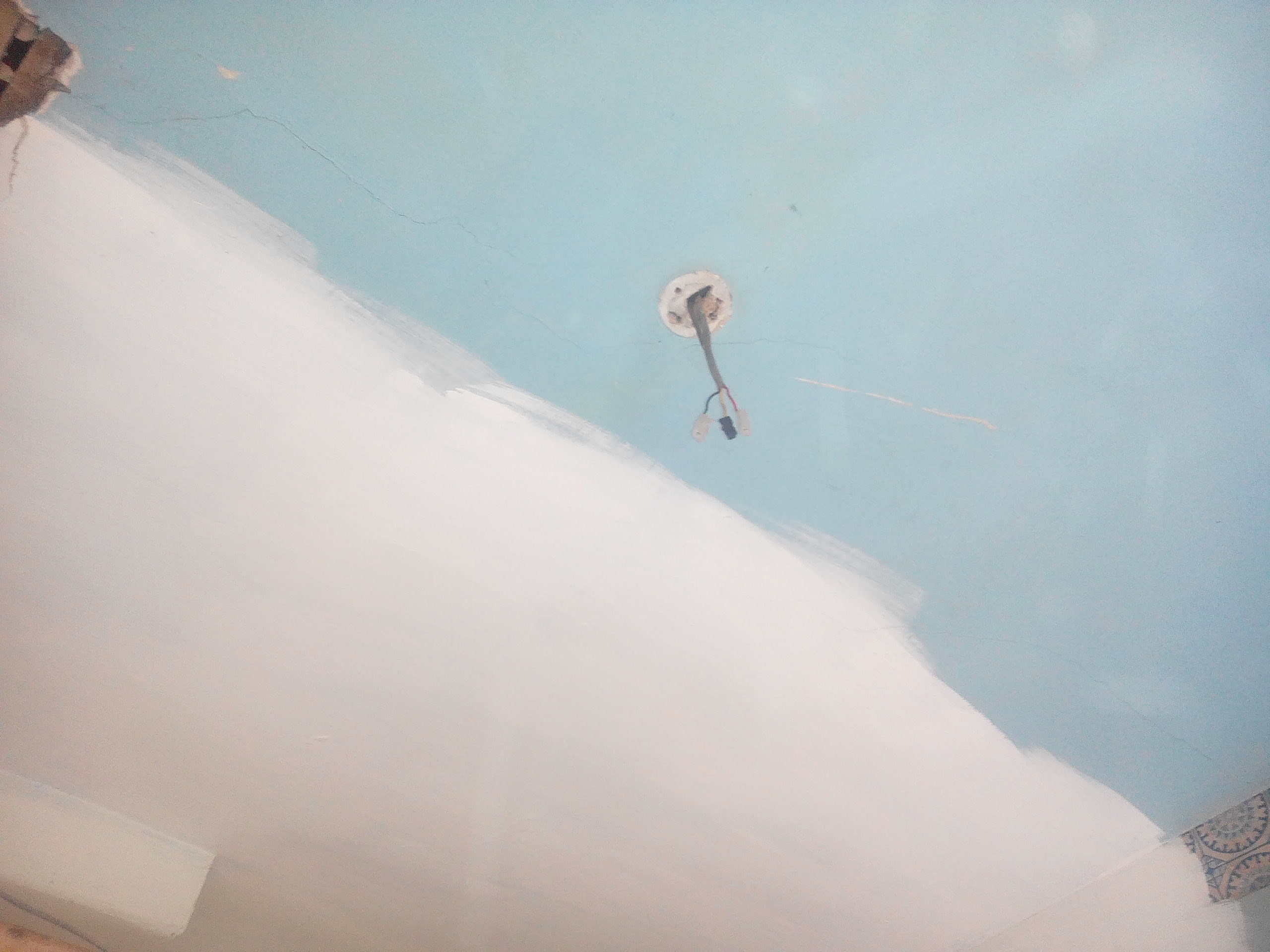
various cables badly jointed.

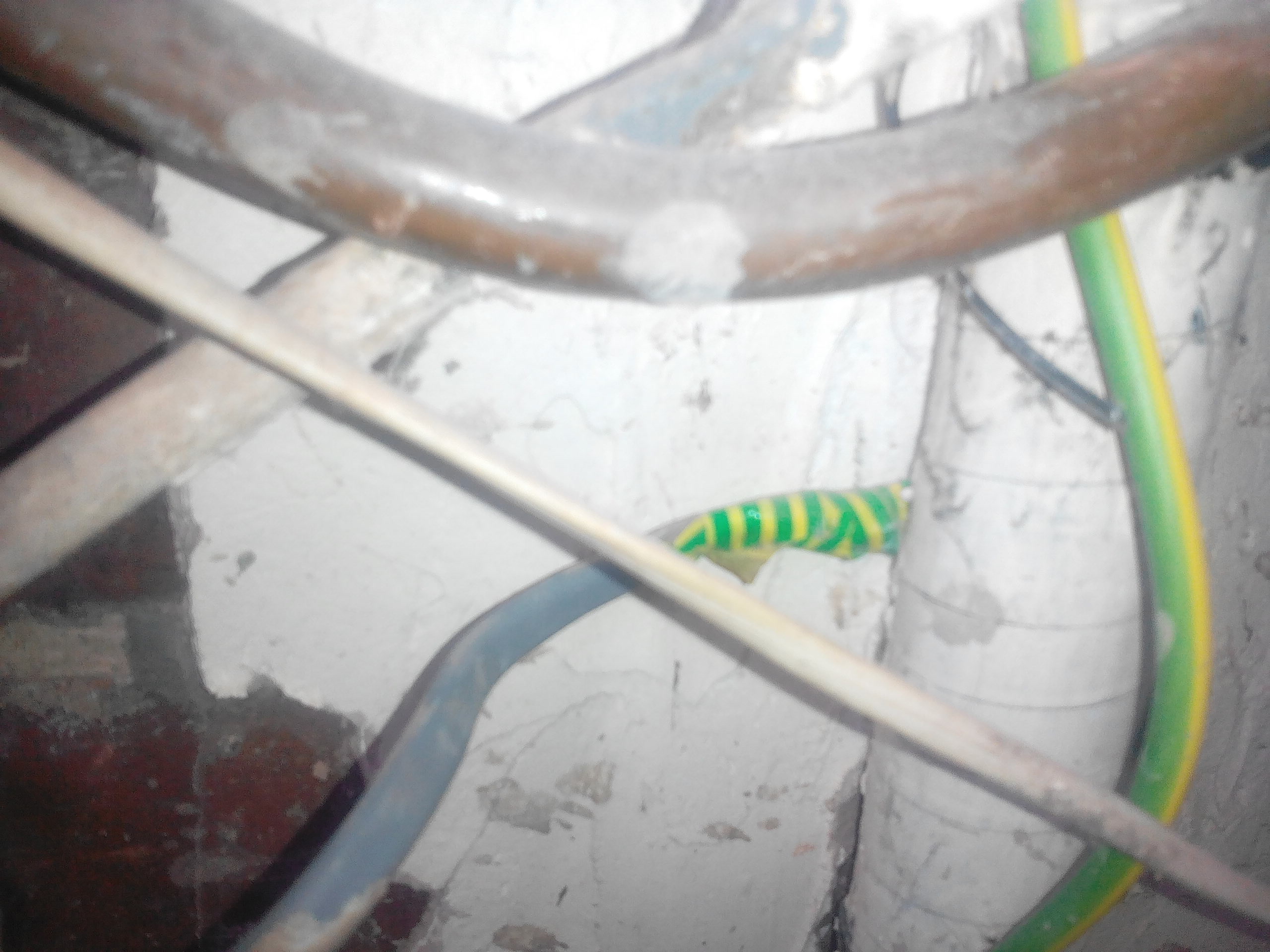
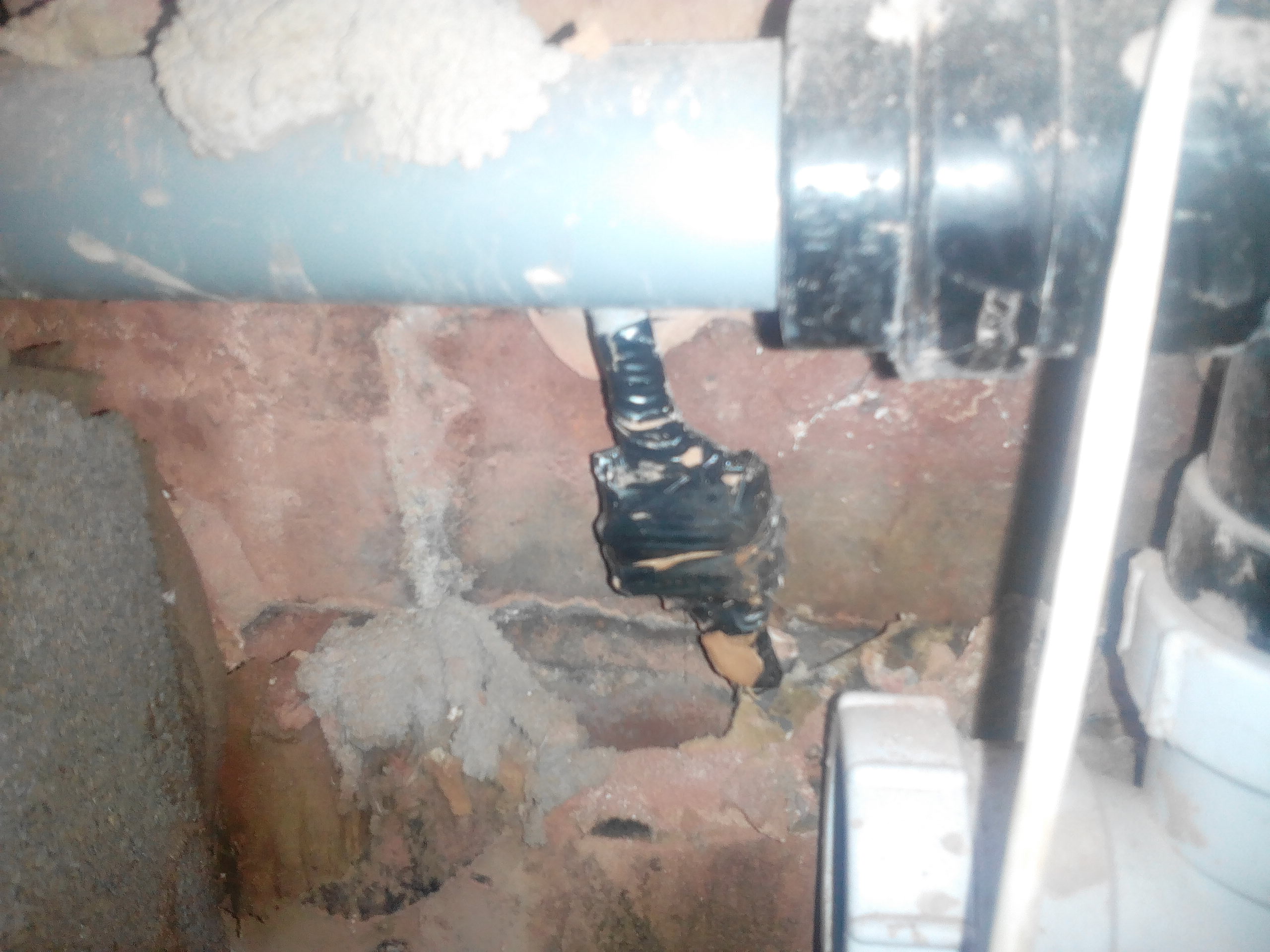
Generally it's a mess as I knew it would be. Although they need disconnecting/removing anyway for the new work I will now have to spend extra time crawling around a damp subfloor trying to work out where they all go, not something I like doing funnily enough.
Couple of striplights etc were wired from this supply cable above dropped ceiling.

various cables badly jointed.



Generally it's a mess as I knew it would be. Although they need disconnecting/removing anyway for the new work I will now have to spend extra time crawling around a damp subfloor trying to work out where they all go, not something I like doing funnily enough.
Zulu 10 said:
stuart313 said:
Do DIYers (and the cowboys) have a loop tester and the regs book, do they bother themselves with Zs readings and if the protective device is going to trip in time. Do they bother to get the regs book out and look up graphs liken this.
I'm so glad you asked that, because yes I do possess a loop tester, a CB tester and an insulation tester, and yes I have referred to my regs when I'm unsure.Not only that but I could probably, if pushed, explain the impedance calculation from first principles.
rich83 said:
mildmannered said:
Heres a question for you bonafide sparks. Are you meant to tape up a crimped connection?
No leave them bare.... Another beauty from today, starting a loft conversion in a bungalow and this is the original wiring on the ground floor, supposed rewire just before the customer bought it yet no certs.
Took a light fitting down.
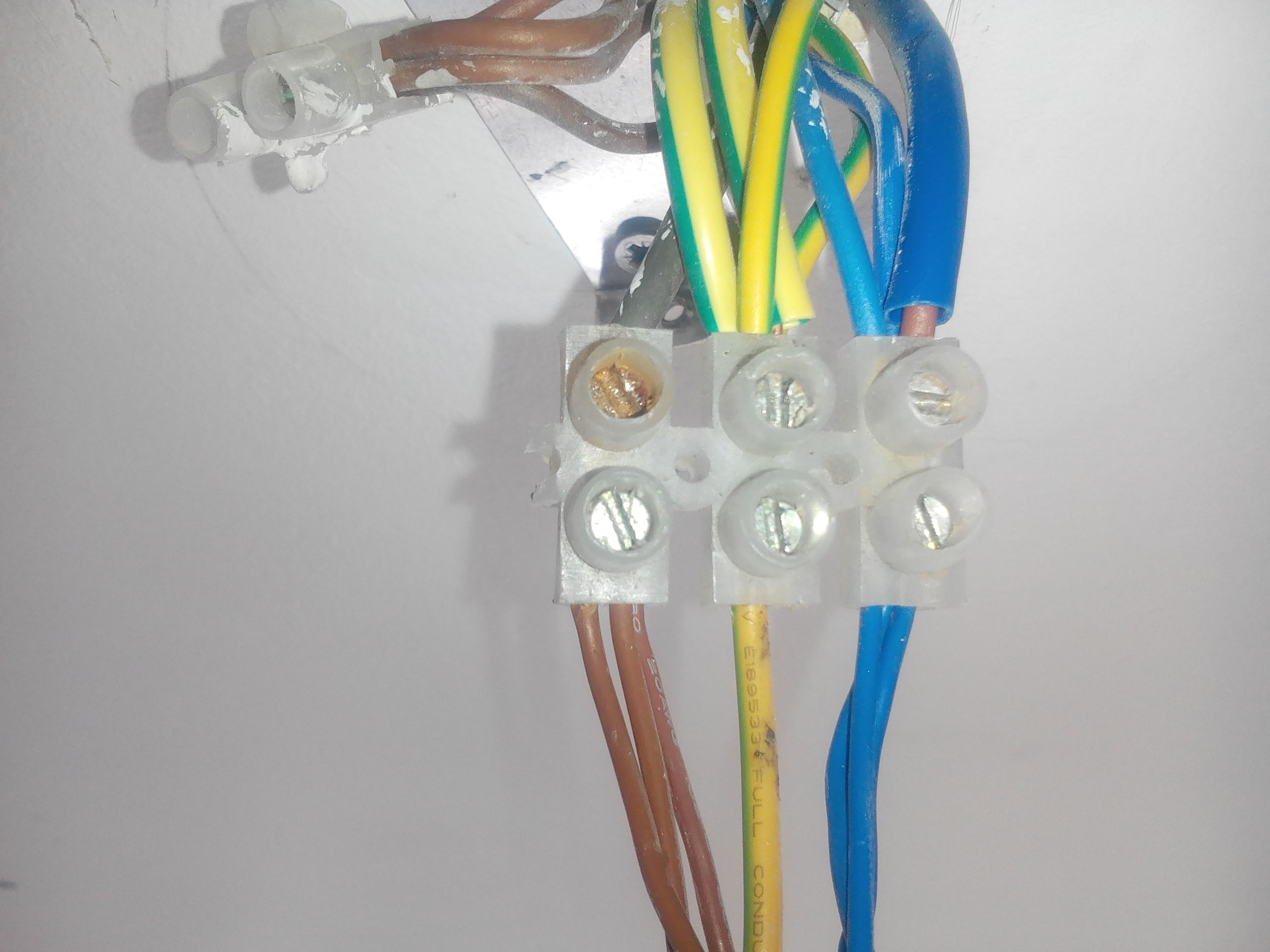
brown sleeving on the blue wire and blue sleeving on the brown wire. WTF
Bathroom downlights
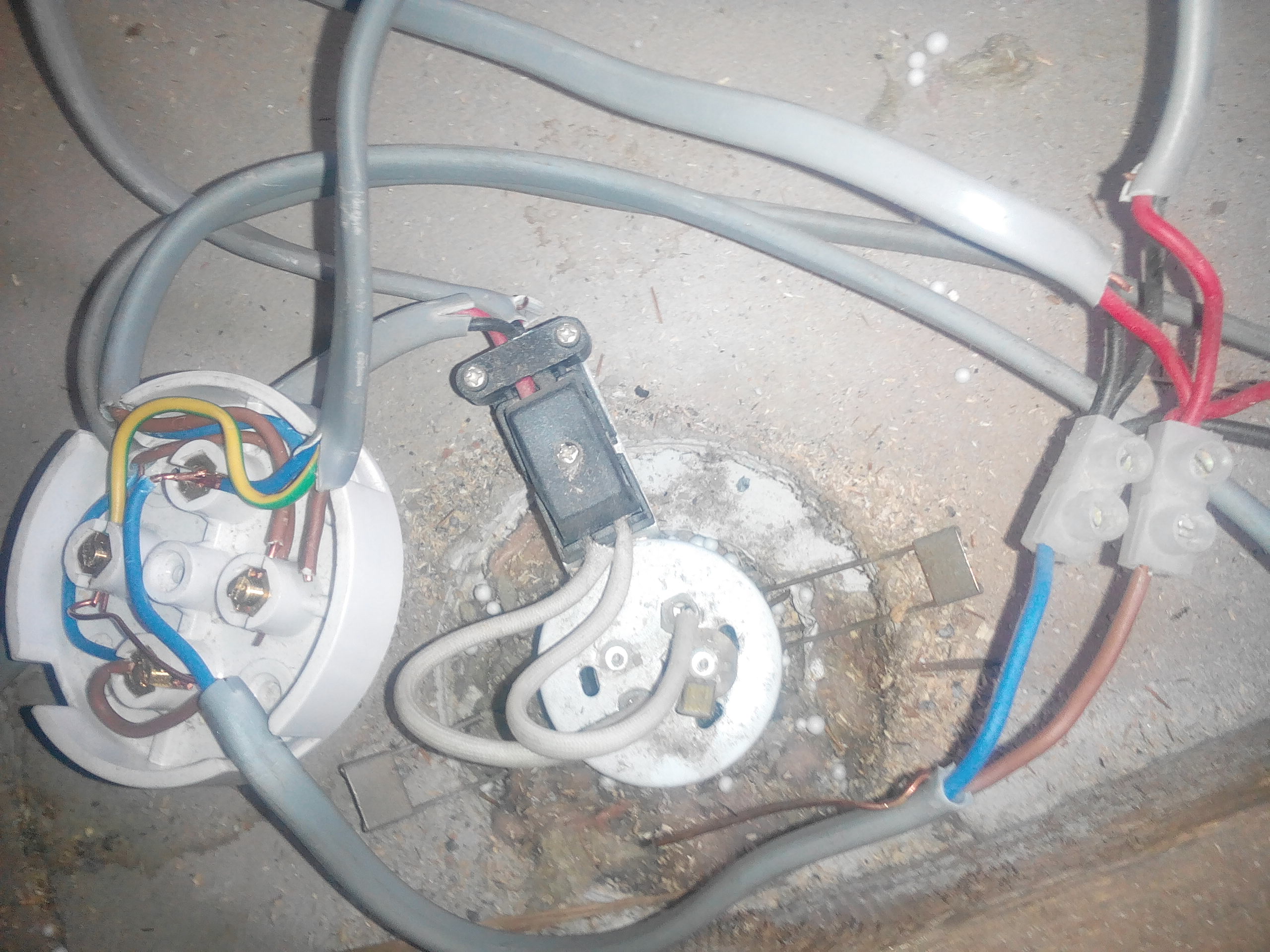
I can see at least 7 serious faults in that picture not including the missing screw that I took out.
Amongst all the other faults why would you need to borrow a neutral out of that JB to get something else working (note chopped off brown). I could post pictures like that every day if I wanted to, there are that many bad installations done by DIYers to keep me in work for all eternity. I would say the last 100 or so houses I have been to have had similar problems to that photo, I cant remember the last time I went to one where it was all ok, I would say 75% DIYers and 25% cowboys, either way 99% of houses have dangerous electrics in my opinion.
Took a light fitting down.

brown sleeving on the blue wire and blue sleeving on the brown wire. WTF
Bathroom downlights

I can see at least 7 serious faults in that picture not including the missing screw that I took out.
Amongst all the other faults why would you need to borrow a neutral out of that JB to get something else working (note chopped off brown). I could post pictures like that every day if I wanted to, there are that many bad installations done by DIYers to keep me in work for all eternity. I would say the last 100 or so houses I have been to have had similar problems to that photo, I cant remember the last time I went to one where it was all ok, I would say 75% DIYers and 25% cowboys, either way 99% of houses have dangerous electrics in my opinion.
Sheepshanks said:
stuart313 said:
I can see at least 7 serious faults in that picture not including the missing screw that I took out.
The earth's are cut off in the old (red/black) wiring, but that was common years ago, wasn't it?What else is wrong? (was the lid missing?)
1. no earth sleeving inside JB,
2.downlights themselves not earthed despite there being an earth terminal
3. earths snipped off as you say so no continuity
4. Connectors just shoved under the floor without an encloseure.
5. Nothing supported or clipped.
6. That snipped off brown wire loose inside the JB and picking up a neutral from this JB for something else, maybe not even on the same circuit is unforgiveable on a reiwre.
7. The connections at the downlights are appalling, you should not be able to see any red or black, it should be sheathed right up to the connections. The way to do it would be to use a small JB thet fits through the hole and a short length of flex that will fit under the cord grip.
Gassing Station | Homes, Gardens and DIY | Top of Page | What's New | My Stuff



